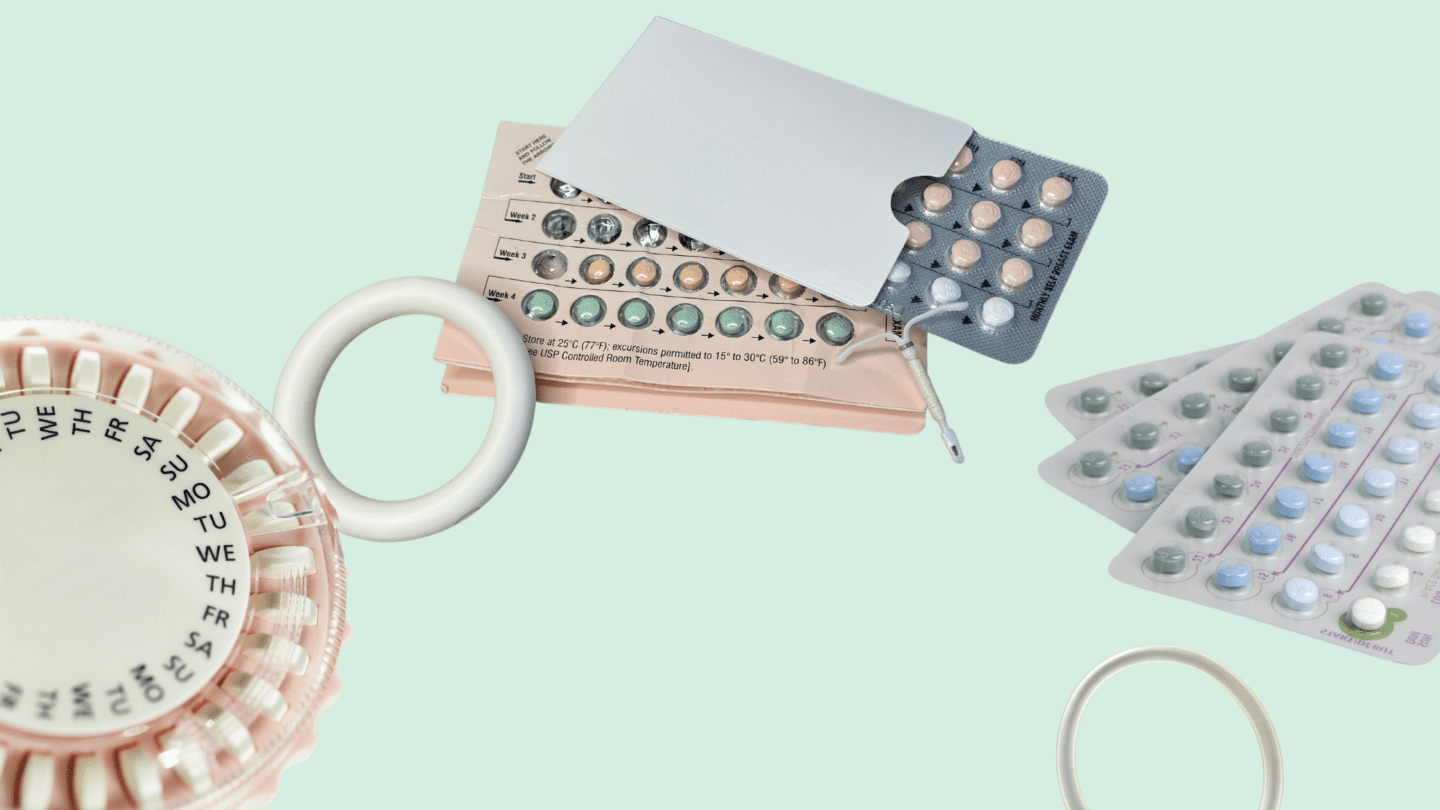When it comes to , your options are plentiful. Single-use forms like condoms are great to have on-hand, but many people also choose long-term methods like IUDs, implants, rings, or pills for added protection and peace of mind.
In the U.S., oral contraceptive pills are the most popular method of long-term behind permanent sterilization.1 Many people use them because they’re highly effective at preventing pregnancy,2 and are easy to stop taking if you decide you want to get pregnant.
You might know oral contraceptives simply as “the pill,” though this nickname can apply to a few different medications. All contraceptive pills are taken by mouth and contain sex hormones that prevent pregnancy. But you may have heard other terms like combination, progestin-only, monophasic, biphasic, or triphasic pills to describe the range of oral contraceptive options.
The number of options for contraceptive pills may seem overwhelming, but understanding the difference between them is key to deciding which one is best for you. What works well for your body may not for someone else, and vice versa. Here, we’ll break down the categories of contraceptive pills on the market, and highlight what you should know about their benefits and risks.
Is adyn right for you? Take the quiz.
Types of birth control pills
All birth control pills use hormones to prevent pregnancy. But different pills contain varying proportions of and/or (an artificial form of ), the two hormones at work.
Estrogen and do two main things to stop pregnancy before it starts. First, they prevent the from releasing an egg each cycle, nixing the opportunity for sperm to reach one. And in the event that an egg is released, these hormones alter cervical mucus and the uterine lining to further thwart fertilization and implantation.
Like what you’re reading? Get the latest straight to your inbox 💌
What are combination birth control pills?
There are two major varieties of birth control pills on the market: combination pills and progestin-only pills.
Progestin-only pills are also known as the “mini-pill” due to the fact that they only contain .3 These pills contain lower doses of the than any combination pill,4 and they come in comparatively fewer varieties.
Combination pills contain both and .5 These types of hormones occur naturally in the body, but the pill uses man-made versions of and in order to prevent pregnancy.
There are many options for combination pills, as their dosage varies based on prescription – and so does the cycle on which you take them. Depending on your personal needs and preferences, some combination pill cycles might work better for you than others.
People taking the combination pill typically follow a 28-day cycle, where they take one active pill per day for 21 days, followed by a week of pills. The placebo week is when people typically get their periods — technically, a “withdrawal bleed,” not a real period — due to a drop in hormones. (Comparatively, there is no week for the mini-pill.)
The week is when people typically get their periods.
On the combination pill, you can choose to take a hormonal pill every day and skip your period entirely, or follow an extended cycle. Some people will take the pill for 84 days (12 weeks), followed by a week. This option can help stop scheduled bleeding that sometimes comes with the typical 28-day cycle.6
Monophasic vs. biphasic vs. triphasic
Some combined birth control pills have different levels of and every day, but others stay consistent throughout your cycle. Combination pills fall into three main categories:7
- Monophasic: These pills have the same amount of and in each active pill.
- Biphasic: The amount of in active pills changes once, splitting your cycle into two parts. In a 21-day active pill pack, the first half would have a lower amount of than the second next half. However, the amount of remains consistent throughout the full cycle.
- Triphasic: Similar to biphasic pills, your cycle is split into portions due to a steady change in hormones. For triphasic pills, the amount of hormones changes twice, dividing a 21-day cycle into three even, seven-day phases.

Quadriphasic (four-phase) is uncommon but also exists, as do 84-day extended regimens that also involve three phases (e.g. Rivelsa).
Both biphasic and triphasic pills are designed to mimic the natural hormonal fluctuations of your monthly cycle. Changing levels doesn’t make these pills any less effective, and some people prefer them to monophasic pills due to the fact that they can be easier to adjust to.
But ultimately, your choice of should be the one that is best for your body. Remember, you might prefer an option that your friends don’t, and that’s perfectly okay.
Benefits and side effects of combination oral contraceptives
There are some reasons why people prefer one type of birth control pill over another. If you’re deciding which one to try, it can help to look at the benefits and potential side effects of each kind.
Combination pills are the most common type of birth control pill on the market. In addition to their over-90-percent efficacy rate, they can provide additional benefits to preventing pregnancy. Many folks who take combination pills experience lighter and more regular periods and reduction of menstrual cramps. They can also be used to treat and reduce the risks of developing uterine, ovarian, and colon cancer.8
Combination pills are the most common type of birth control pill on the market.
And when it comes to trying monophasic, biphasic, or triphasic combination pills, there are a few differences to consider. All three will offer the same protection against pregnancy when taken correctly, though you might find some easier to adjust to than others.
Because monophasic combination pills don’t mimic the fluctuations of a regular menstrual cycle, you might find that they help alleviate certain hormonal symptoms, such as menstrual headaches. Some evidence shows that breast pain and swelling might be alleviated with triphasic pills, but side effects between pill types tend to be pretty similar overall.9
One downside with biphasic and triphasic pills is that it can be difficult to realign your cycle if you forget to take your pill for more than a day.10 Skipping even one dose can jeopardize the efficacy of your . Monophasic pills also need to be taken every day, but are a little more forgiving if you forget a pill since the amount of in each active pill doesn’t change.
However, combination birth control pills – no matter if they’re monophasic or multiphasic – can be risky for certain people. If you are a regular smoker or have a history of high blood pressure, they can especially increase your risk for blood clots, heart attack, or stroke.5,8
Benefits and side effects of progestin-only pills
Progestin-only pills are a reliable option if you cannot or prefer not to take the combination pill. Since they contain no , they don’t come with the same cardiovascular risks, and can also be taken right after childbirth.11
But like any medication, all types of hormonal birth control pills can cause side effects. Headaches, nausea, and are especially common in the first few months of use.8 Many of these fade with time, but it’s important to keep an eye out for serious or uncomfortable side effects, especially if birth control pills interfere with your quality of life.
What kind of is right for you?
Understanding the differences between contraceptive pills is the first step to finding one that is right for you. Some levels, cycles, and phases might work better for your body than others, so it’s important to keep these differences in mind when choosing a new method. If your is causing negative side effects, it might be time to switch methods.
Want to learn which is right for you? Get started with The Birth Control Test.
-
- Guttmacher Institute. “Contraceptive Use in the United States by Method.” Guttmacher.org (2021 May; Last accessed 2023 Jan 25).
- Trussell, James. “Contraceptive failure in the United States.” Contraception 70.2 (2004): 89-96.
- Centers for Disease Control and Prevention. “Contraception.” CDC.gov (Updated 2022 Nov 1; Last accessed 2023 Jan 25).
- Mayo Clinic Staff. “Choosing a birth control pill.” MayoClinic.org (2022 Dec 3; Last accessed 2023 Jan 25).
- National Library of Medicine. “Birth control pills.” MedlinePlus.gov (2022 Jan 10; Last accessed 2023 Jan 25).
- Nelson, Anita L. “Extended-cycle oral contraceptive pills with 10 μg ethinyl estradiol pills in place of placebo pills.” Women’s Health 3.5 (2007): 529-535.
- Wiegratz, Inka, and Christian J. Thaler. “Hormonal contraception—what kind, when, and for whom?” Deutsches Ärzteblatt International 108.28-29 (2011): 495.
- American College of Obstetricians and Gynecologists. “Combined Hormonal Birth Control: Pill, Patch, and Ring.” ACOG.org (2018 Mar; Last accessed 2023 Jan 25).
- Romm, Aviva, et al. “Menstrual wellness and menstrual problems.” Botanical Medicine for Women’s Health (2010): 97-185. [Accessed via ScienceDirect]
- Institute for Quality and Efficiency in Health Care. “Contraception: Hormonal contraceptives.” NCBI.NLM.NIH.gov (2017 Jun 29; Last accessed 2023 Jan 25).
- American College of Obstetricians and Gynecologists. “Progestin-Only Hormonal Birth Control: Pill and Injection.” ACOG.org (2023 Jan; Last accessed 2023 Jan 25).









